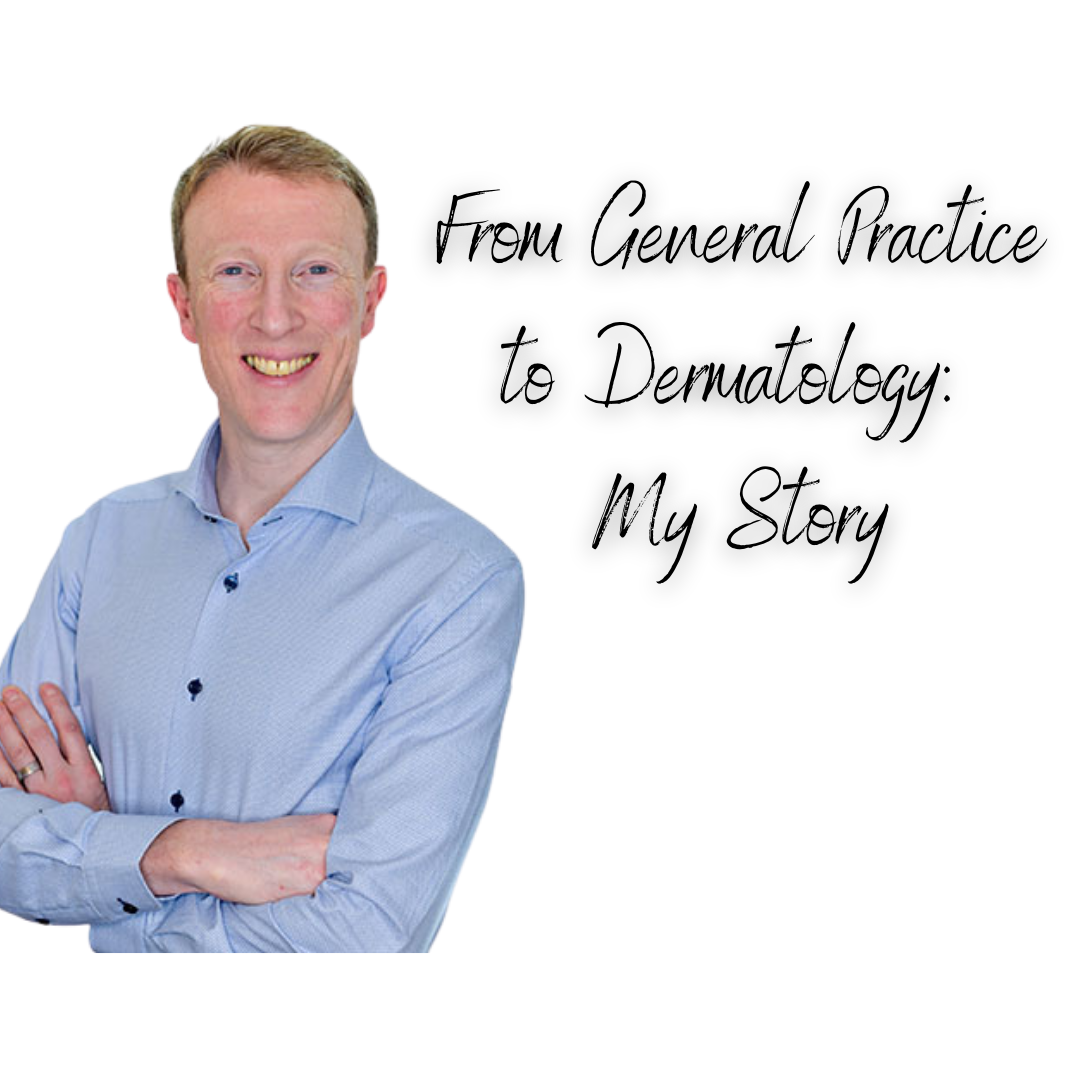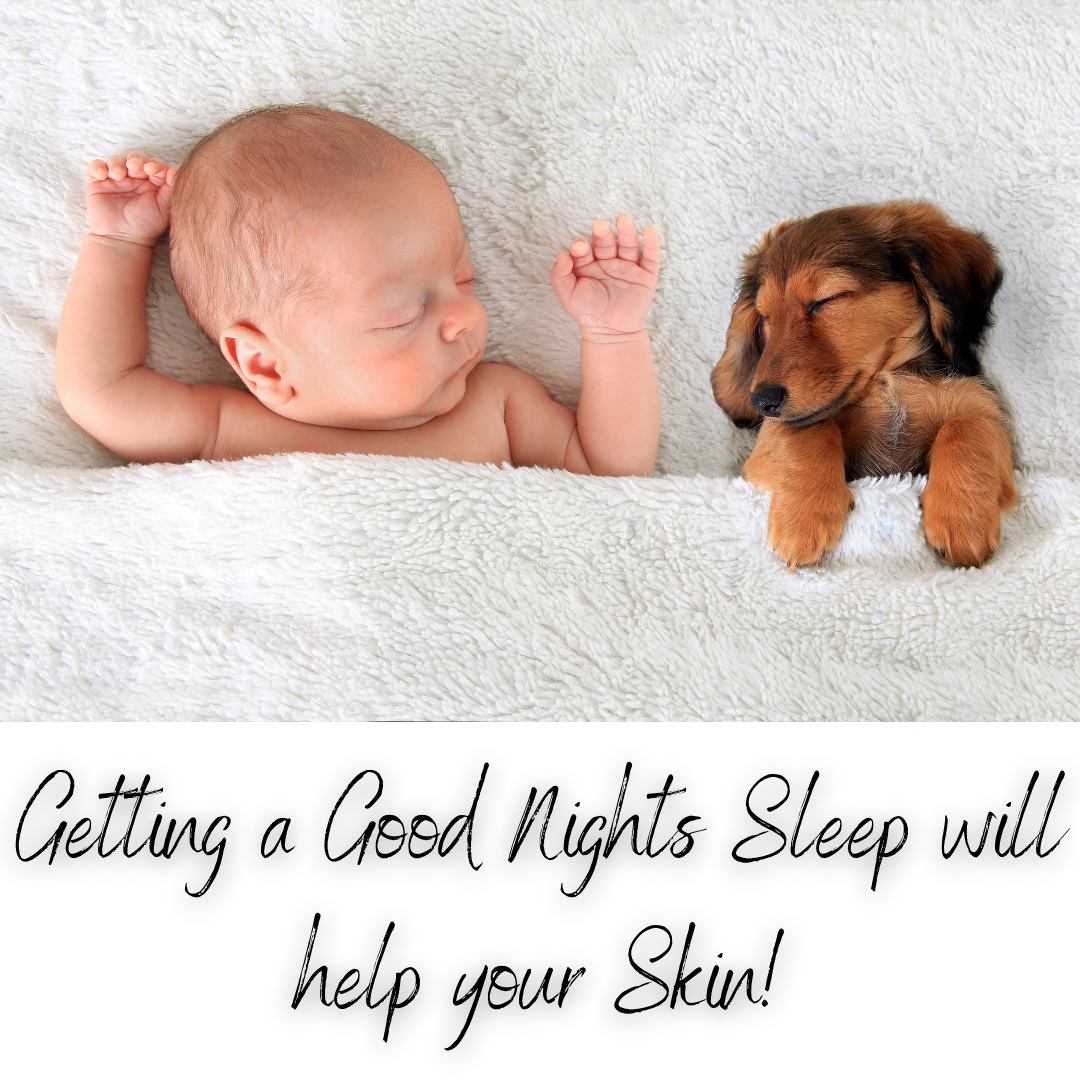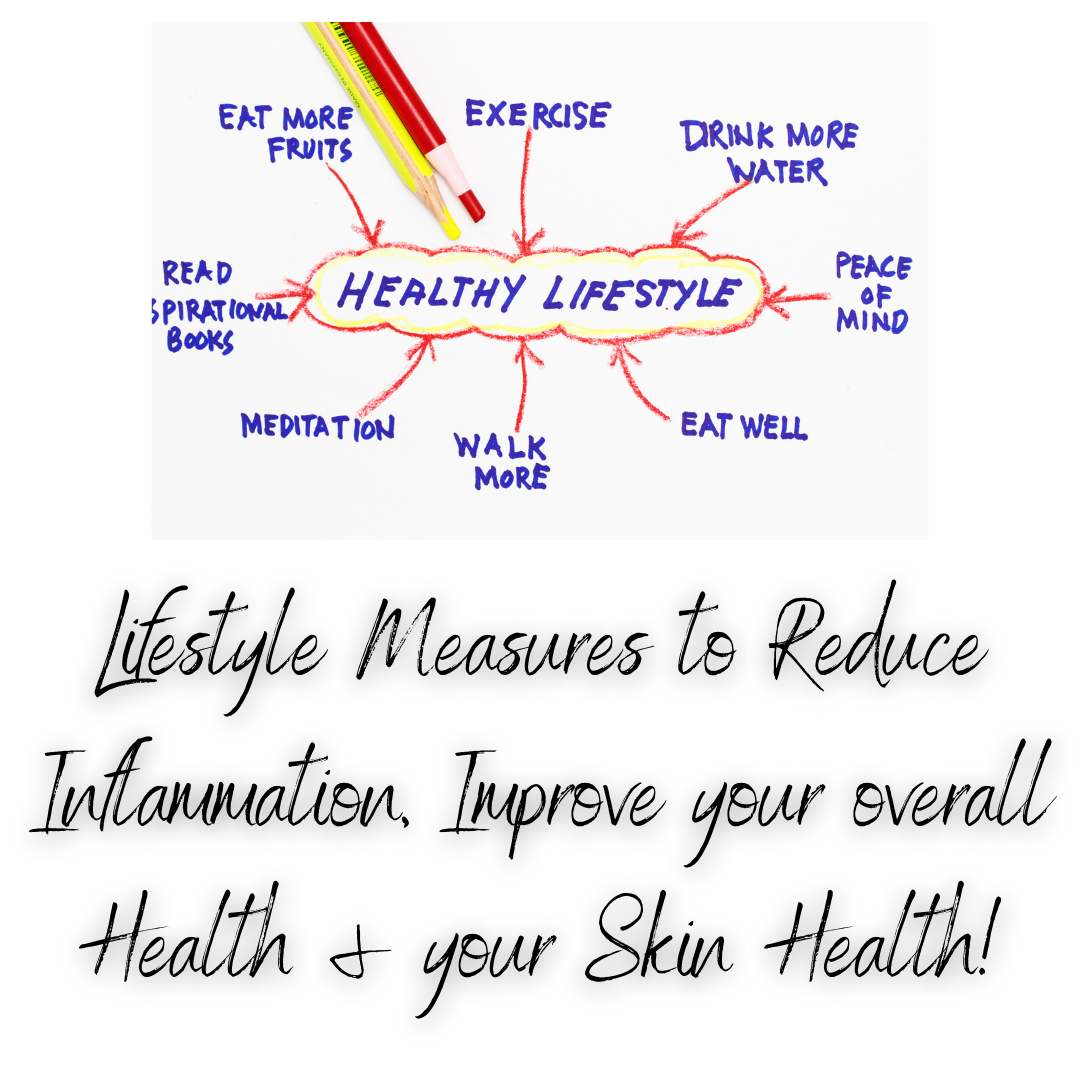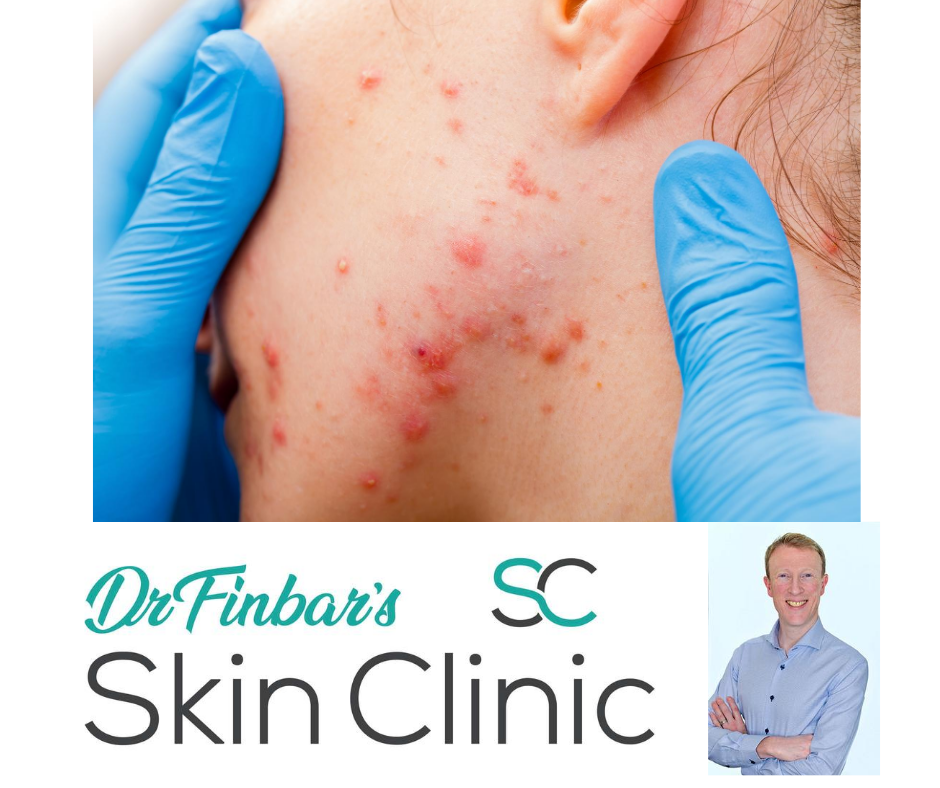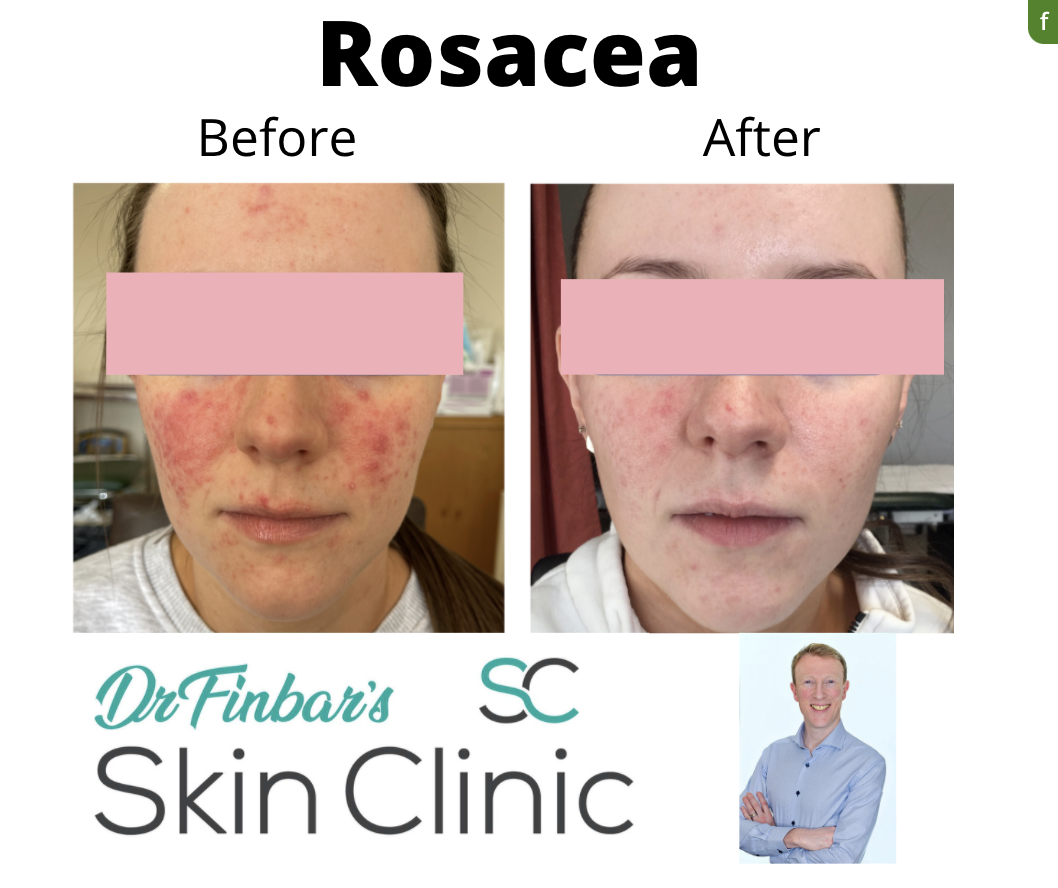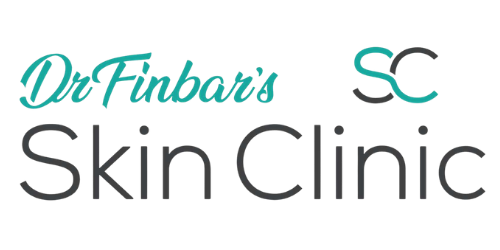Ezcema: Video
Ezcema: Blog
Background
Eczema is a very common skin condition. There are many types which I will give more details on later, but the underlying problem and treatments are similar.
Some words first...
The words eczema and dermatitis mean the same thing! (I'll stick to the word eczema throughout this blog).
'Eczema' comes from the Greek word 'to boil' and is used to describe red, dry and itchy skin which can sometimes become weeping, blistered, crusted, scaly and thickened.
''Atopic' is used to describe a group of conditions including asthma, eczema and hay fever. (Not all eczema is atopic eczema- more on this later). It can running in families, but is not contagious.
In this blog I will explain eczema as 'atopic eczema'. As the treatments are very similar between the different types of eczema it is still worth reading on if you have been diagnosed with another type of eczema, such as, seborrhoeic eczema or varicose eczema.
What Is Eczema?
The main problem in all types of eczema is with the skin barrier function. The skin usually keeps the moisture trapped within the deeper layers, but in eczema that waterproof outer barrier is working properly.
This is due to the genetic problem with a gene (called filaggrin) which mens the outer layer of skin cells don't bond properly together. A good analogy for this is to compare a cemented bricked wall to a stone wall in the Mournes!
Normal skin cells are packed tightly to keep fluid trapped but in ezcema these cells are more like the loosely packed stone wall. Just image how much water can escape from the skin of someone with eczema!
(see image below)
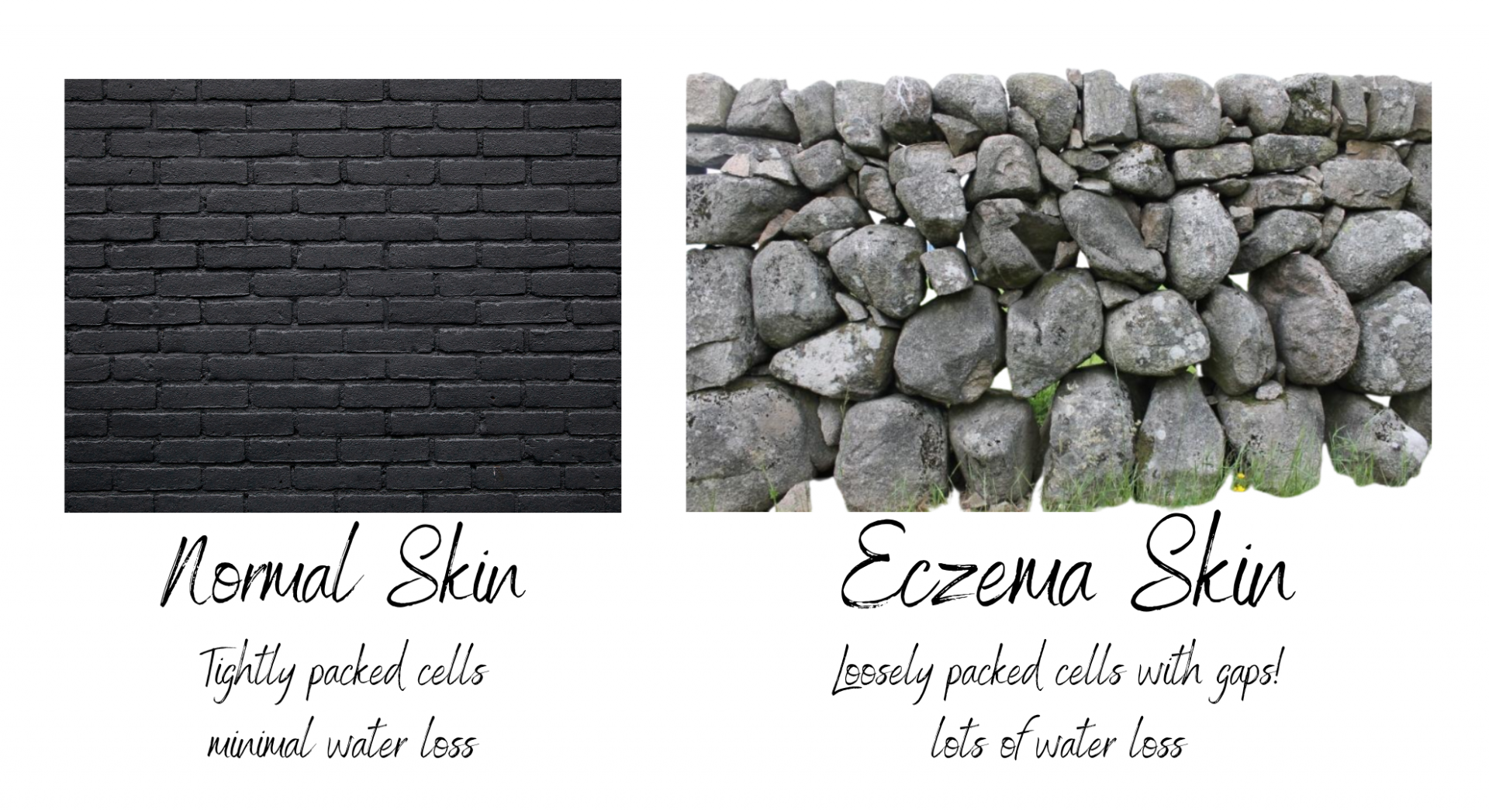
What are the symptoms?
The main symptoms of eczema are:
- Dryness (which leads to..)
- Itchiness (which leads to ..)
-
Scratching & Rubbing (which leads to..)
- a rash, excoriations and skin thickening to protect itself &
- inflammation
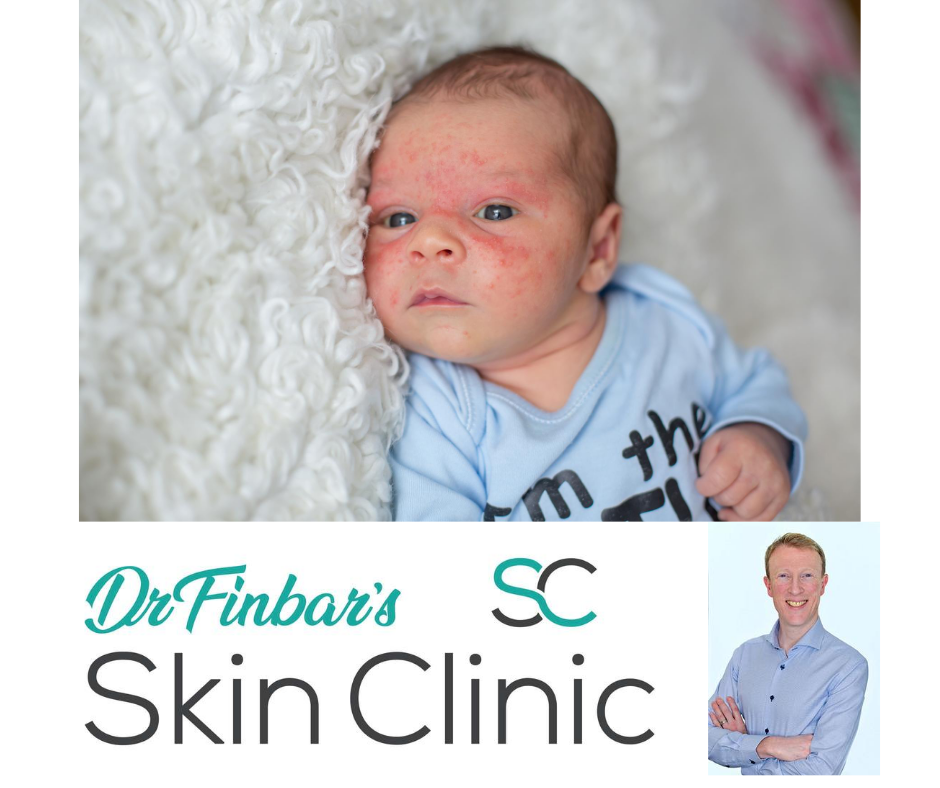
Atopic Eczema can affect any part of the skin including the face (as in image above) but also commonly affects the inside folds at the elbows and knees.
Other types of eczema have different patterns e.g. varicose eczema affects the lower legs (where you get varicose veins); seborrhoeic eczema affects scalp, central face, edges of nose; contact eczema will mainly affect the area of contact your skin has with the allergen; hand eczema affects... you've guessed it hands & feet!
What does it look like?
Affected skin is usually red and dry and can feel rough to the touch. The itch leads to scratch marks and thickening of the skin.
When infected it tends to ooze and get covered in a yellow crust.
For more information on this please read my blogs on measures to improve your skin and overall health to reduce inflammation (clicking the buttons below.)
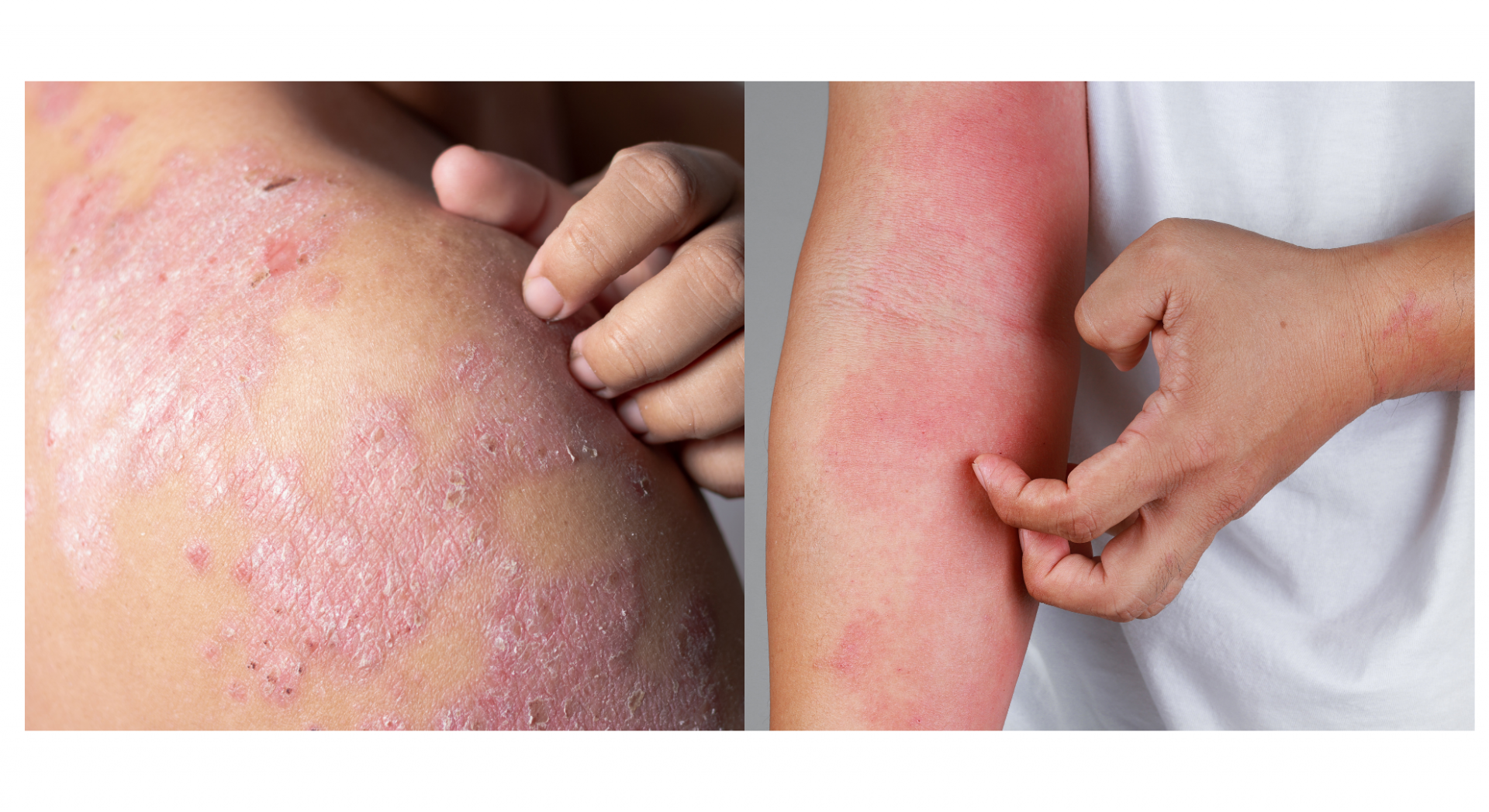
What can Make Eczema Flare up?
- Environmental triggers e.g. heat, dust, pets soaps and other chemicals.
- Infections
- having a cold
- bacterial infection or infection with cold sore virus (herpes simplex- very painful!)
- Under-treating i.e. not using enough moisturiser
- Stress
- Poor sleep
- Inflammation
For more information on lifestyle measures to reduce inflammation please read my blogs (clicking the buttons below.)
Is Eczema caused by Allergy?
This is a common question I get asked but the truth is that eczema is more likely to be the cause of future allergies. The weakened skin barrier can allow allergens (e.g. foods) to get in and trigger an immune response. This is particularly true for children with facial eczema. Anyone with small kids knows that the food doesn't always end up in the mouths but all over their face! If they eczema on their cheeks (a common site in young children) the food can end up there and then trigger an allergy.
This is why in children with facial eczema its very important to use a regularly good barrier moisturiser to protect them from getting food directly onto the broken skin barrier.
Skin Consultation with Dr Finbar
At our consultation I will talk to you about your concerns and confirm the diagnosis (not everyone has atopic eczema!)
I will discuss a range of treatments depending on the severity of your (or your childs) eczema. These may include general advice on lifestyle as described above. I will take into account your personal views and health practices. My recommendations are likely to include some or all of the options below:
Complete emollient therapy:
This means regular application of moisturiser (also know as emollients) and avoidance of soaps- wash with a moisturiser also. They are often underused!
Moisturisers:
Moisturisers are the mainstay of treatment in eczema. The best one is the one that you will use regularly! Moisturisers perform several actions from occlusion of the skin surface to reduce water loss, drawing water from deeper skin layers to the dry skin surface and also to 'plug the gaps' between the loosely packed skin cells to make you skin feel better.
I will provide a prescription which can be filled by your GP, but some very good moisturisers are not available of NHS prescription and I will link you to those.
Steroids:
There is quite a bit of fear in the community regarding steroid use. Overuse can lead to thinning of the skin. They are used to reduce inflammation and itch associated with eczema. When the itch improves, there is less rubbing and scratching and so the skin can begin to repair with the moisturiser treatment.
In eczema the main method of delivery is via an ointment which needs to be applied at night only. They come in different potencies and should only be used for short periods of time.
However, underusing steroid can lead to a longer course of more severe eczema. This is where email follow up that I provide my patients can very helpful to guide use to use the minimum effective dosing.
Antihistamines:
These can be helpful in some people at night by helping you sleep. They could be tried, but if not effective there is no reason to keep taking them.
Antibiotics:
These are occasionally required for superimposed infection. They may be in topical or oral form.
Bandages / Special Clothing
Occasionally I may recommend either compression socks (in varicose eczema) or garment to be worn at night over the creams to help them absorb.
See video Below to learn how to apply moisturisers to your child and what quantities you need. Click the 'Watch on YouTube link to see this excellent 2 minute video- link is safe).
What next?
Most people get an excellent response to the prescribed treatments, however they are not a cure! The underlying problem causing the eczema is still present, so moisturisers should continue long term and also avoidance of triggers and try to reduce in inflammation by eating healthily, sleeping well and taking plenty of exercise.
Other Treatments
In addition to the lifestyle measures, I also recommend increasing your intake of Omega 3s. These are available in oily fish e.g. salmon / makrel.
Skin Omegas+ contains Omega 3 oils are derived from oily fish and have many health benefits ranging from improved cardiovascular health and prevention of Alzheimer's dementia. It also contains Vitamin A, which is a key ingredient for skin health.
Where can I get more information about atopic eczema?
Links to patient support groups:
National Eczema Society Hill House
Highgate Hill
London, N19 5NA
Tel: 0800 089 1122
Email: helpline@eczema.org
Web: www.eczema.org
Share this post on:
RECENT POSTS (click image)
-
My Story
29 October 2022
-
Improve Your Sleep to Reduce Skin Inflammation
3 February 2021
-
Dietary Advice to Reduce Skin Inflammation
1 February 2021
-
Acne
February 2021
-
Rosacea
Nov 2021
-
UV / Sun Protection
February 2021
-
Skin Cancer
29 October 2022
-
Psoriasis
29 October 2022
SUBSCRIBE
Copyright © 2023 Dr Finbars' Skin Clinic All rights reserved.

